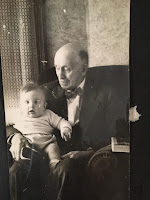Role: MC, Compere, Session Leader
This post is part of a series intended to become a Mermaid’s Tavern Guide to Zoom Singing publication for folk arts organizations, feature artists, session singers, and online audiences for folk music. We welcome comments below.
The MC, or compere, fills the same role you would at a real-world event. You are the Mouth for the organization at concerts and the session leader for singarounds. You are the Friendly Face and audience liaison, providing hospitality, making announcements, introductions and thanks, and answering questions on mic. You may be the Zoom Starter yourself, but you do not need to have a paid Zoom account to be an MC.
Being both MC and Zoom Host is a lot of work for one person. We recommend that you designate a separate Zoom Host and Zoom Co-Hosts to handle the tech, manage the waiting room and chat, and be the Feature Artist liaison at the event.
What You Need
- A computer or laptop (not a tablet or smartphone) running Windows, MacOS, or Linux
- Reliable internet access with high bandwidth: a wifi location close to your router is better, a wired Ethernet connection is best
- The latest version update to the Zoom app so you can use all available features
- The link to join the event
- The name and contact information for the Zoom Starter and Zoom Host for the event
- The name and contact information for the Feature Artist(s) for the event to check in on late arrivals
- To mute/unmute yourself and others, it helps if the Zoom Starter or Zoom Host makes you a Zoom co-host
What You Do
To Start the Event
- Join the event about 30 minutes before the start time so the Zoom Starter or Zoom Host can make you a Zoom Co-Host.
- Welcome the Feature Artists and introduce the Zoom Host who will conduct the tech check and obtain recording permission. Remind artists that you will give each a five-minute heads-up on-mic (one to two songs) before the end of their set, so they do not need to watch the chat.
- Check in with the Zoom Co-Host and agree when to “open the doors” and admit participants from the waiting room.
- As the doors open, welcome the first arrivals and chat with participants until start time.
- Check in with the Feature Artist and Zoom Host and agree when to Mute All and start the event.
During the Event
- At start time, briefly review Basic Zoom Controls, Original Sound, and etiquette for mute and unmute during the event. For example, state whether and when to unmute for applause, and recommend that participants use Zoom Chat for feedback, questions, and audience announcements.
- For a concert, introduce each Feature Artist and give them their cue to start their set.
- For a singaround, work with the Zoom Co-Host to call on session singers to lead their songs in the order designated (see Who Sings When)
- During a singaround, thank each session singer for their song, introduce the next, and keep up a modest (15-second) amount of friendly chatter between songs.
- During a concert, the Zoom Host and Zoom Co-Hosts will monitor the waiting room and chat, and mute any unmuted participants. As MC, you should focus on keeping the audience engaged with the concert or session.
- Five minutes before the end of the set, give the Feature Artist or session singers a two-songs heads-up to keep the event on time.
- Thank the Feature Artist for their set and invite the audience to donate to their tip jar while the Zoom Host pastes the tip jar link into the chat. Make sure to speak each link for mobile device and dial-in users and for the visually impaired.
- Invite the audience to visit the organization’s and the artist’s web pages and join their mailing lists. Ask the Feature Artist to announce any of their upcoming gigs. Announce the organization’s upcoming events, and if time permits, voice any audience announcements submitted through the chat.
To End the Event
- Thank the artist and the audience, and give a shout-out to the Zoom Host and Zoom Co-host for managing the event.
- Wrap up the event with a cordial goodbye so that participants know it is time to leave the meeting.
- If desired, invite lingering participants to unmute and visit briefly while people are leaving.
- Give the cue to the Zoom Host that it is time to end the meeting for all participants.


Comments